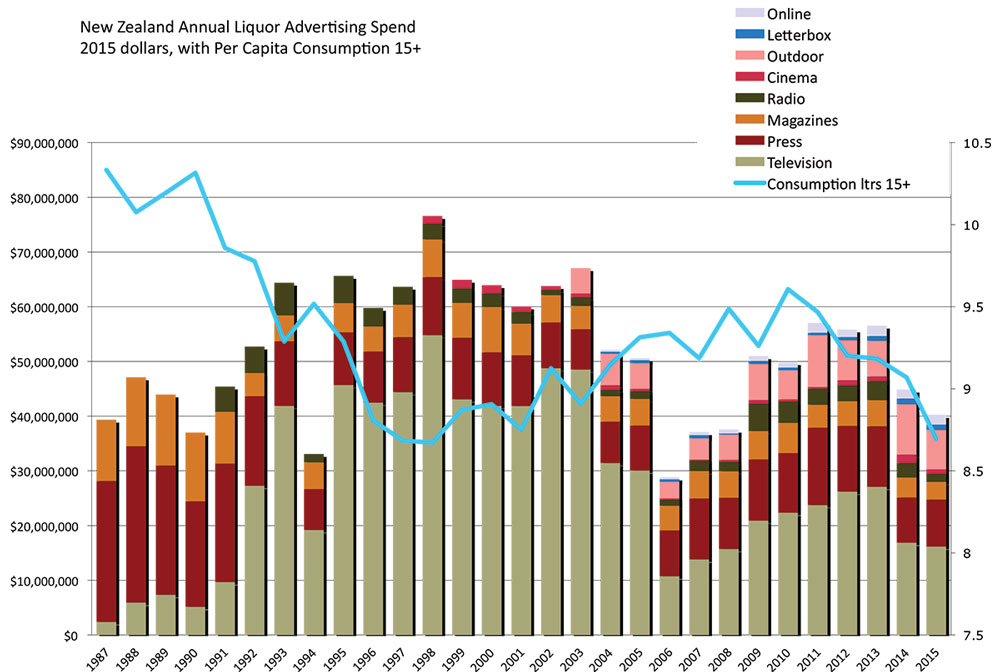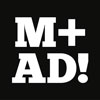New Zealand’s annual measurement of alcohol adspend and consumption continues to surprise – just out today is a report from the Foundation for Advertising Research that shows the 2015 adspend was lower than 1991, which was the last year of the broadcast ad ban.
The graph measures total alcohol adspend on an inflation-adjusted basis and per capita consumption of alcohol by New Zealanders 15+ for the 29-year period 1987-2015.
The adspend figures are sourced from Nielsen with the consumption and inflation data from NZ Statistics. “To the best of our knowledge it is the only measure of adspend and consumption on a long-term basis in the world,” says foundation director Glen Wiggs.
There are several interesting features, Wiggs says:
- There is clearly no correlation between adspend and consumption. Indeed 1998 was the year of the highest adspend and the lowest consumption. For selected short periods it can be argued that there is a correlation between adspend and consumption but if other short periods are selected it can equally be argued that there is an inverse correlation. Over the long-term there is no correlation thus there is no evidence that advertising increases consumption or vice-versa.
- Until 1 February 1992 advertising brand or price in alcohol ads was banned on radio and television. This inhibited adspend but it is interesting to note that the level of adspend in 2015 was lower than 1991, which was the last year of the ban.
- The lifting of the ban had an immediate effect on media share of adspend with television revenue increasing dramatically as did radio to a lesser extent. Newspapers and magazines lost marketshare and have never recovered.
- Online has a very modest share of adspend and is behind television, newspapers, magazines and outdoor. This is in stark contrast to the general trend of online becoming the dominant advertising medium overall.
- 1987 was the year of the highest per capita consumption of alcohol at 10.333 litres compared with a comparatively moderate 8.695 litres in 2015. In our view this is due to the shift from quantity to quality. During the ban the development of brands was inhibited. A successful brand has a constellation of attributes but two essential requirements are quality and creative advertising. During the ban there was generous brewery support for sporting club bar facilities and pubs sold beer in jugs and flagons – it was all about volume sales of a commodity. Commencing with the lifting of the ban in 1992, there was rapid development of beer brands with emphasis on increased quality and attractive bottles and packaging. The wine industry followed the same track. There is now quite sophisticated competition with brands competing on quality.
- Adspend varies greatly with the highest year (1998) being almost double that of the lowest year (2007). 2015 was well below the 29-year average and in the bottom quartile.
Ban ‘not justified’
“There is an ongoing debate on whether alcohol advertising should be restricted,” Wiggs said. “There is little question that there is a need to ensure that exposure by children and adolescents to alcohol ads should be minimised – but there appears to be little justification for a ban.
Share this Post



